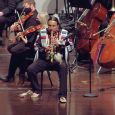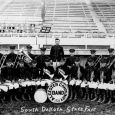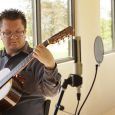The Gift of South Dakota
Subscriptions to South Dakota Magazine make great gifts!
Subscribe today — 1 year (6 issues) is just $29!
The Art of the Marching Band
Oct 20, 2011
In towns across South Dakota, chilly autumn sunrises are often heralded by the beat of distant drums and random bellows and toots. The sounds of the middle and high school marching bands beginning to warm up bring smiles to the faces around the tables at the café. The bands are playing, the coffee is hot, and life is good.
As they near the end of this season of games, parades and competitions, let’s give the bands a last appreciative ovation before they head indoors to take their seats in the orchestra. Consider the phenomenon of this traditional art form -- what it means to us, and what it takes to make it work in every community lucky enough to have a band marching up Main Street for homecoming.
Marching bands invigorate their communities, stirring up loyalties, patriotism, pride, and the all-important team spirit. The team might be having a bad year or a great one, but the band strikes up with enthusiastic optimism at the start of every contest. They will be there in gleeful encouragement, regardless of the odds of winning the game. Their parents will be there too. The crowd in the bleachers spans several generations.
It is not unusual to see band members wearing their football or cheerleader uniforms instead of the regulation band uniform at halftime. Like most citizens of South Dakota, a number of the players wear more than one hat. What must be confusing to the football player/band members is to switch to a team where the object is definitely not to run into each other and knock each other down.
All hats off to the bandmasters, who not only teach teenagers to play music together, but to play while marching and swinging their instruments in unison and making recognizable shapes and patterns covering the field. After all those morning practices, each member knows how to be a moving part of the whole design. They count on each other to know that part and get it right every time. Their discipline hitches tradition to new moves, our heritage to our future.
Looks like a miracle to me, this work of art.
Pat Boyd is Executive Director of South Dakotans for the Arts, a statewide nonprofit membership organization dedicated to advancing the arts through service, education and advocacy. Pat and her husband, artist George Prisbe, live at Hanna Creek in the northern Black Hills.











Comments